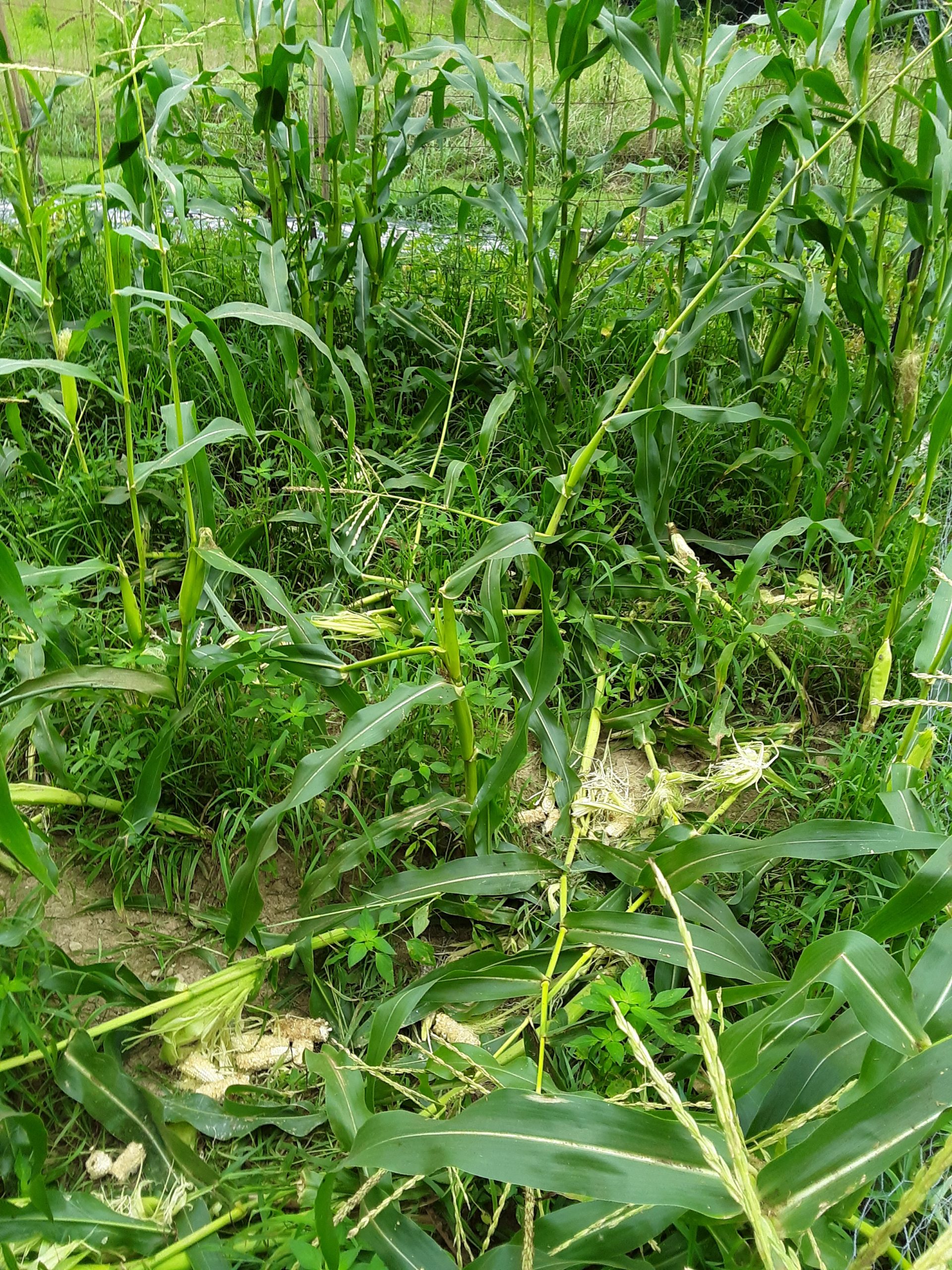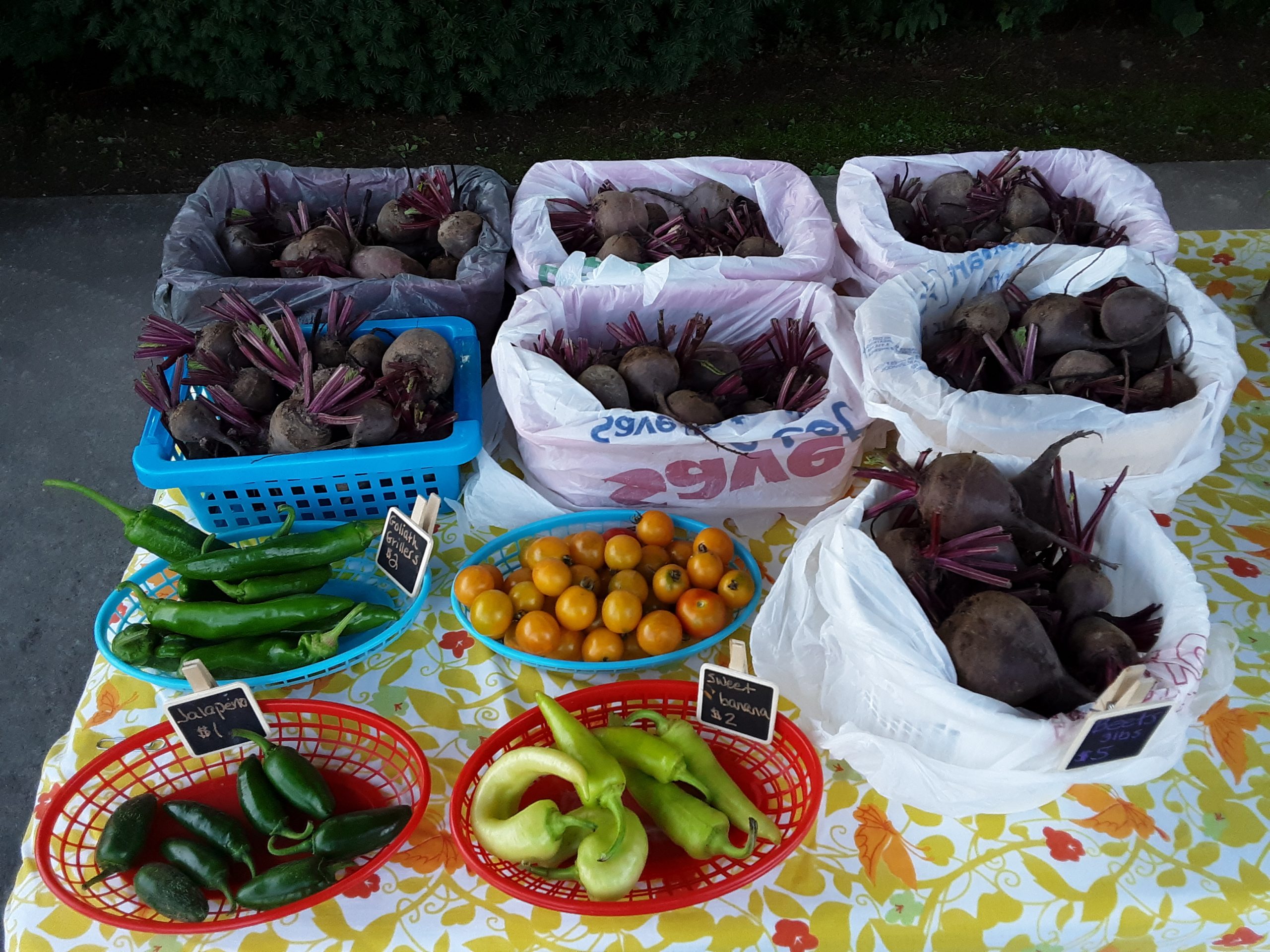Raccoons, beetles, and worms, Oh My!
Every garden has it’s problems. Some have more issues than others and some have less. Some people have soil issues. Others find they need more sunlight. My problems mostly consist of living creatures that are trying just as hard as me to consume the produce that I worked so hard to raise. From raccoons to squirrels to worms and cucumber beetles, gardening season is basically wartime. How do you protect your garden from insects and animals, I’m not sure. I thought I would share with you what we have tried and what others have recommended in hopes that it will help someone experiencing the same problems.
Beetles
This year, I’ve had more insect damage than ever. It started when I first set out my plants. The cucumber beetles emerged from their hiding spot in droves. Cucumber beetles are yellow and can either have black stripes or black spots. Alone, the beetles may not actually kill the plant but the wilt disease they spread, will. These beetles wiped out many of my cucumber, squash and zucchini plants. So, I started doing my homework. Suggestions for combat were to use row cover, hand pick the bugs off, or use varying pesticides. Some of these methods were not feasible and others really didn’t work. It does seem that as my plants got older, they were better able to survive the beetle attacks. Or maybe there are just fewer beetles as the summer progresses. Although, I did see cucumber beetles up until just a few weeks ago.
Japanese beetles are the other beetles that ravage our farm. They love the foliage of my grapes and berry plants. And recently have taken up residence in the silks of the ears of corn. I haven’t used anything to defend against them. I actually let one grapevine be the sacrificial plant hoping it would keep the beetles there and not elsewhere. But after they defoliated it, they moved on. I know people that use beetle traps that hang around areas of their property, away from their desired plants, to cut down on the damage. The debate is whether or not the traps actually draw more beetles to the area than are naturally there. I think the traps are worth the risk. And next year, I may be purchasing some myself to test. I recommend to buy early as products seem to be sold out when you are in the heat of battle.
Caterpillars
The other destructive insect that I am battling this year is caterpillars. In years past, I have had greenhorn worms eat the foliage of my tomato plants. But this year, a new sheriff moved into town. It’s a small brown caterpillar, called a fruitworm or earworm, that bores into the tomatoes. You will know them from the circular hole in the tomato. The hole may contain fecal matter, an identifying factor for the fruitworm. Research stated that the caterpillars start munching on tomatoes while they are green. That may be so, but I have found holes in tomatoes at all states of maturity.
These caterpillars also love corn. Recently, while harvesting corn, I discovered that many ears had worms near the top. These worms are easy to find as they do have some size and eat a path in the ear of corn. Excrement, called frass, a brown mushy substance may also indicate the presence of these caterpillars in corn. In order to preserve any corn, I cut away the infected part of the cob and use the rest.
Possible methods for prevention are to till the ground in the fall as the worms can overwinter in the soil, inspect plants daily for signs of larvae and to use varying pesticides. Specifically for corn, research suggests using a clothespin at the top of the ear that connects to the silk to prevent entry. Also, to apply mineral oil to the silks as it suffocates the worms. I wonder if mineral oil may be a two fold winner and deter the Japanese beetles as well.
Animals
At our place here in Rickman, we have so many wild animals, that we joke it’s really a wildlife refuge instead of a farm. On any given day, we have skunks, raccoons, possums, turkeys, deer, rabbits, hawks, and squirrels. We have had raccoons and possums come right up to our backdoor. We also had a cow on our back porch but that’s a different story. Most of these creatures spend the non gardening months sharpening their teeth and lying in wait for the first plant to be placed in the garden, or at least that’s what I think they do. After planting, an all out assault commences.
Last year, I was tossing on average of five tomatoes a day due to squirrel damage. We haven’t had nearly that much damage this year but it could be because the fruitworms are beating the squirrels to the punch. I remedied the rabbit damage to the my strawberry patch by covering it with two inch chicken wire. The deer damage has slowed with the five foot chicken wire fence we placed around most of the garden. The purple hull peas are unfenced and have suffered the consequences.
The raccoons have proven to be the archnemeses. Last year and this year, the raccoons have feasted on our sweet corn. I was hoping the chicken wire fence would deter them but it hasn’t proven successful. We even used landscape staples around the bottom of the fence to prevent tunneling under. Due to their finger hands and expert climbing skills, the raccoons are merely scaling the wire at night. Some suggestions, I received, to alleviate the problem were to use a radio, live traps or dogs. I did set a live trap for two weeks last year and didn’t catch a thing. We don’t have dogs. And the only battery operated radio that I own has a speaker problem. So I have resulted to harvesting the corn early and living with the fact that I may not have any to sell.
The garden battle of 2020 will wrap up soon. The pests and animals will return to their off season foraging grounds and celebrate their wins. (I know that’s what they do.) And I will record the details of all the produce I was able to salvage and preserve. I professed a few weeks ago, in the midst of tossing 65 ears of ruined corn, that I would not grow corn again but I might change my mind by next year. After all, someone has to teach those raccoons a lesson. Until then, I will be thankful for what I’ve been given.



